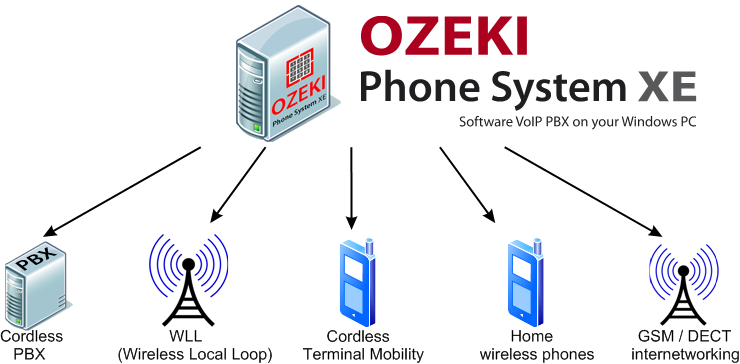What is DECT?
You are probably reading this article because you are interested in communication through wireless phonelines. We will not tell you, however, how GSM (Global System for Mobile Communication) or Wi-Fi (WLAN, or Wireless Local Area Network) works, but you can read about its more reliable brother, DECT.
DECT (Digital Enhanced Cordless Telecommunications) is a digital wireless telephone technology. It was developed by European companies. Like GSM, time division multiple access (TDMA, which divides the signal of the same channel among several users within a medium network) is also used here for transmission of radio signals to phones. Over large areas usage of GSM is preferred, but in corporate networks, cities or other smaller areas with lots of users, DECT will turn out to be a better choice. Dual-mode phones also exist, which are equipped for both GSM and DECT.

Its five major applications are shown in Figure 1 above and explained below:
- Cordless PBX: It provides lots of mobile employees to your company. It helps you to connect to the wired telephone system and resend signals by radio antenna to many employees using phones within your company, each of them with their own number.
- WLL: or Wireless Local Loop. It is the best choice in a neighborhood served by one telephone company. A standard telephone, fax machine or computer modem would be plugged into a FAU, or a fixed access unit, containing a transceiver. If many users share the same antenna in an urban area, WLL is the best choice to get installed.
- Cordless Terminal Mobility: Although you can use it with cordless phones, just like you would use it with a mobile PBX, your mobility would be less than that of GSM users.
- Home wireless phones: At home you would only need a single-cell antenna to connect it to several wireless phones inside and outside your house.
- GSM/DECT internetworking: DECT and GSM standards could interact with each other, meaning that an outdoor GSM phone can be moved to the DECT system inside, if GSM phones are made dual-mode phones, which would search for a dect connection first and then look for gsm if the latter is not available.
Ozeki Phone System supports DECT, as well as practically all the latest developments of telecommunication. Since Ozeki Phone System is able to provide the most flexible and most advanced technology with the higest quality and easiest usage, it is the best possible choice these days.
Read the following pages for further information:
